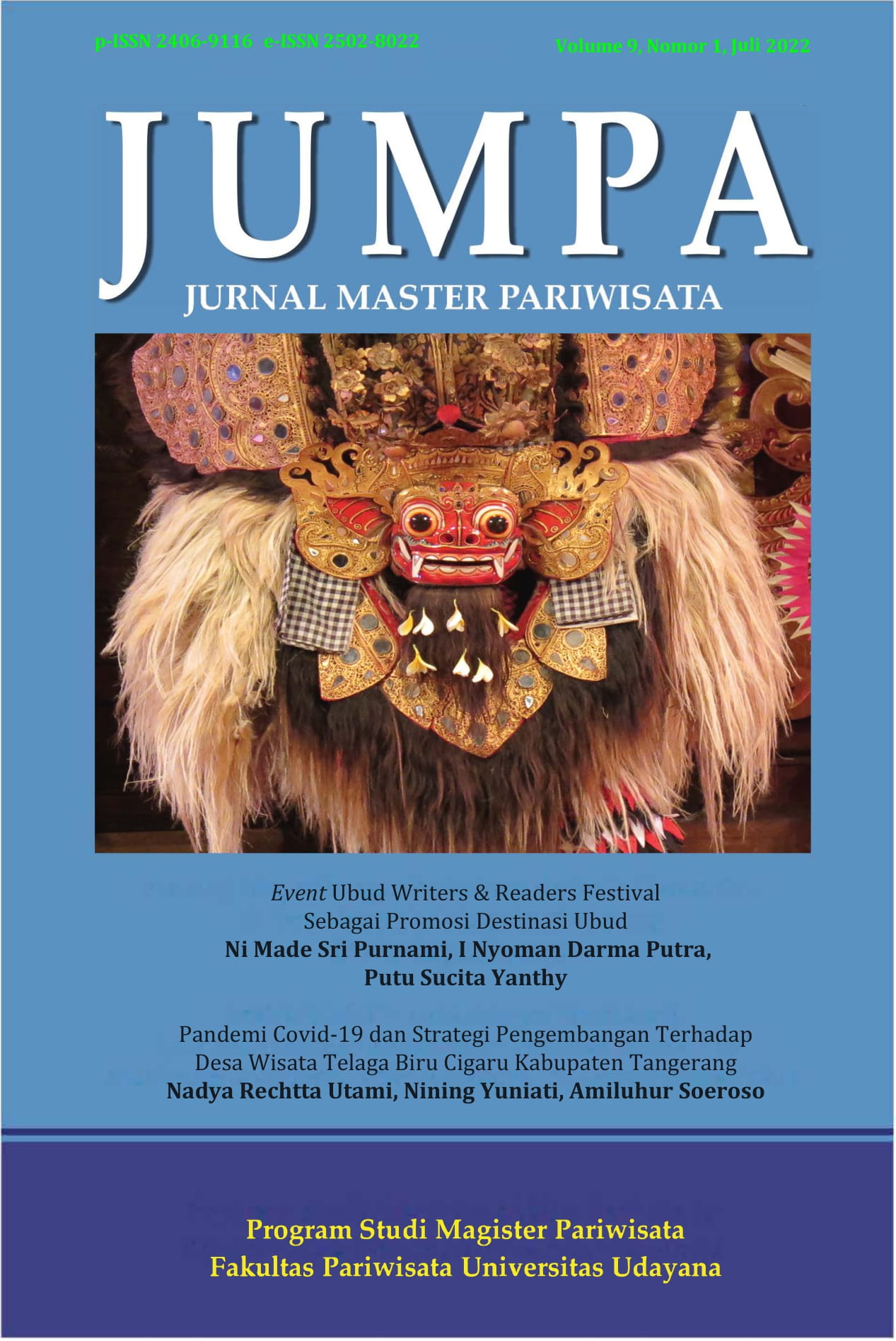Urgensi Pelestarian Ekosistem Lingkungan Fisik Pada Destinasi Wisata: Pengalaman dari Kawasan Ekowisata Hutan Mangrove Batu Lumbang, Denpasar, Bali
Abstract
The purpose of this study is to disclose the importance of preserving the Batu Lumbang mangrove forest in Denpasar, Bali. The mangrove forest is notable for its high biodiversity rate, and it is also become a popular tourist destination at the same time. This study employs convergent parallel mixed-methods data collection, which includes observation, mapping with Google Earth and Landsat 8 satellite imagery, semi-structured interviews with relevant key informants, and a literature review. Afterwards, descriptive techniques are used to analyse the data. The results indicate that the Batu Lumbang mangrove forest has a coverage area of approximately 85.9 Ha, with a rainfall tension of approximately 100 mm/year in the rain season and 60 mm/year in the dry season. Sixteen vegetation species were discovered in the mangrove forest compound, all of which are common in lowland and mangrove ecosystems. There are also 36 species of fauna, the majority of which are bird and avian in nature. Furthermore, changes in land cover indicate a vibrant ecosystem in the Batu Lumbang mangrove forest area. So far, three types of land cover have been identified: mangrove forests, water bodies and the built environment. Mangrove forests remain dominant among these three, accounting for 60.35 %. As a result, it is no wonder that mangroves have become the primary tourist attraction in Batu Lumbang. Some preservation efforts related to tourism activities that can be made based on its ecological value include: establishing a system of visitor management, dealing with waste problems, and spatial management in areas with high biodiversity as a form of rigorous conservation initiative.
Keywords: preservation, ecosystem, mangrove, tourist destination, batu lumbang.














